Raiders defensive coordinator Gus Bradley said in his introductory press conference that they needed to address the front first and “then fill it in everywhere else”. General manager Mike Mayock and head coach Jon Gruden spent the offseason doing exactly that. In free agency, they signed pass-rusher Yannick Ngakoue and several defensive tackles including Quinton Jefferson and waited until the draft to fill in other needs. The Raiders had a big hole at free safety but might have gotten one of the biggest steals in the draft when TCU safety Trevon Moehrig fell to the second round reportedly because of a back injury. Mayock wasn’t concerned and traded up to get him.
Advertisement
In the third round, the Raiders added depth to their pass rush with Malcolm Koonce, who could be used as a situational pass rusher right away. They also drafted Divine Deablo in the third round. Deablo will attempt to make a position change from safety to linebacker, and depending on how quickly he can adapt, he might provide an interesting chess piece for Bradley in certain situations.
Trevon Moehrig (6-0, 202 pounds)
It takes a little imagination to see how Moehrig fits into Bradley’s defense. Bradley’s base coverage is Cover 3 with a free safety in the middle of the field. At TCU, Moehrig mostly played in split field coverages. They mainly played quarters, so Moehrig was asked to essentially play a lot of off-man coverage on tight ends and slot receivers with help from underneath coverage.
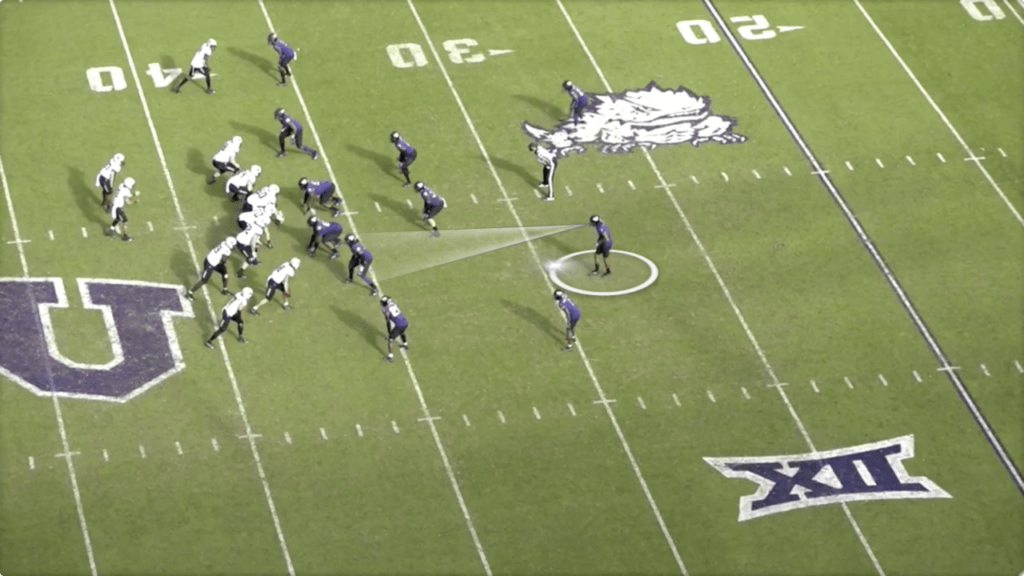
Here, it looked like Moehrig had to sort out who would end up as the deepest vertical receiver after the route distribution from the bunch.

The receiver on the ball ran a deep corner, so Moehrig had to lock on to him in man coverage. The receiver farthest outside ran an out route, occupying the corner. Moehrig had no help and was in a one-on-one situation.
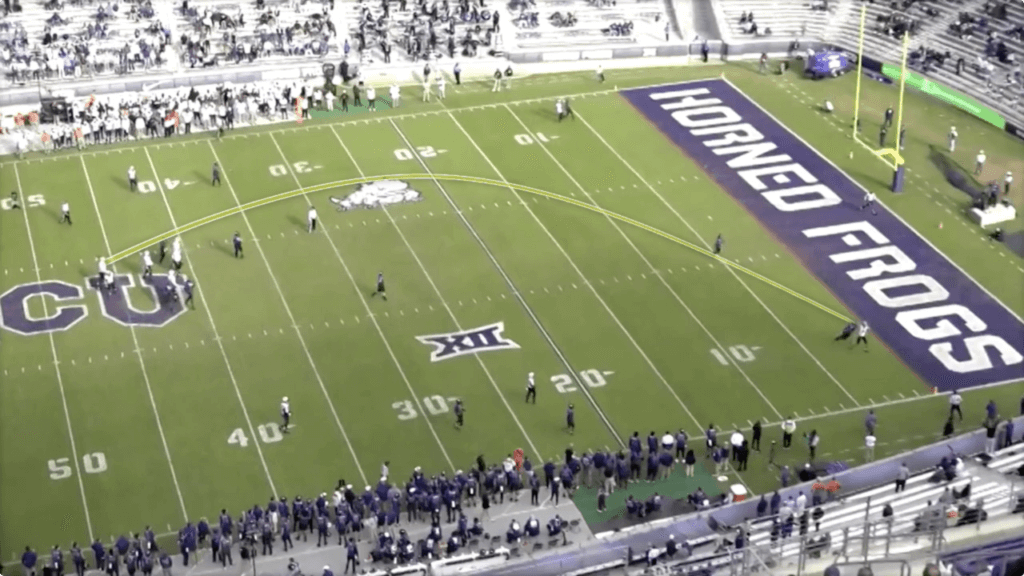
Moehrig opened up his hips and ran step for step with the receiver, smothering the corner route. When the ball arrived, he timed his jump perfectly and stretched out to knock away what looked like a nearly perfect pass.

On this play, the TCU defense matched up against Iowa State’s empty formation with a three safety look with Moehrig matched up with the No. 2 receiver. Because of the spread-out formation, Moehrig didn’t have help.

Moehrig man-turned, opening up his hips toward the sideline at first. He kept his eyes on the quarterback and felt or saw the receiver in his peripherals breaking inside.
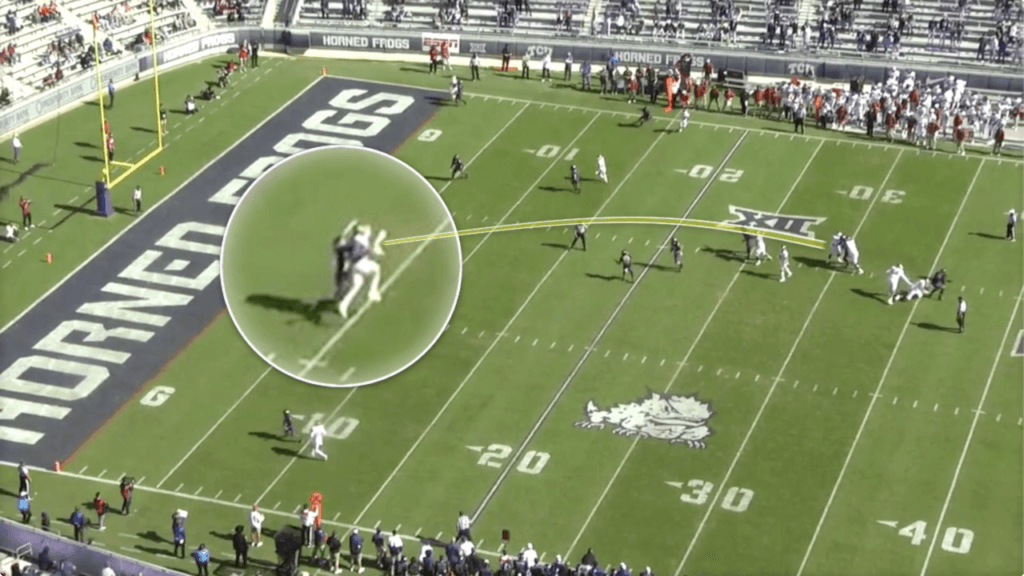
He displayed hip fluidity, quickly flipping his hips inside and staying in the hip pocket of the receiver on the “dig” route. When the ball was thrown, Moehrig swiped the ball away without making contact too early.
Even though Moehrig did not play a lot of center field in college, he has the traits to do it effectively. He has a natural feel for taking angles and fluid hips, he can close, and he has excellent ball skills (20 passes defensed and six interceptions in the last two seasons). Additionally, Bradley started to incorporate more quarters coverage — Moehrig has plenty of experience playing — last season, calling it on 17 percent of pass plays according to Pro Football Focus. Moehrig should be a Day 1 starter and looks to be the ballhawk in the middle of the field that the Raiders have been searching for since Charles Woodson retired.
Advertisement
Divine Deablo (6-3, 227 pounds)
Deablo played all over the field at Virginia Tech. He played in the slot, he played some third safety in the hole in split field coverages, he played in the box, and he played deep in quarters like Moehrig did at TCU. He was mainly a safety who played in space but for the Raiders, Deablo will attempt to make a switch to weakside linebacker. Playing closer to the line of scrimmage, the reads will be quicker and he’ll have to react faster but Bradley has had success with the Chargers playing defensive backs like Adrian Phillips and Derwin James on the second level. Deablo has the size and physicality to do it and with his speed and ability to cover, the upside is intriguing.
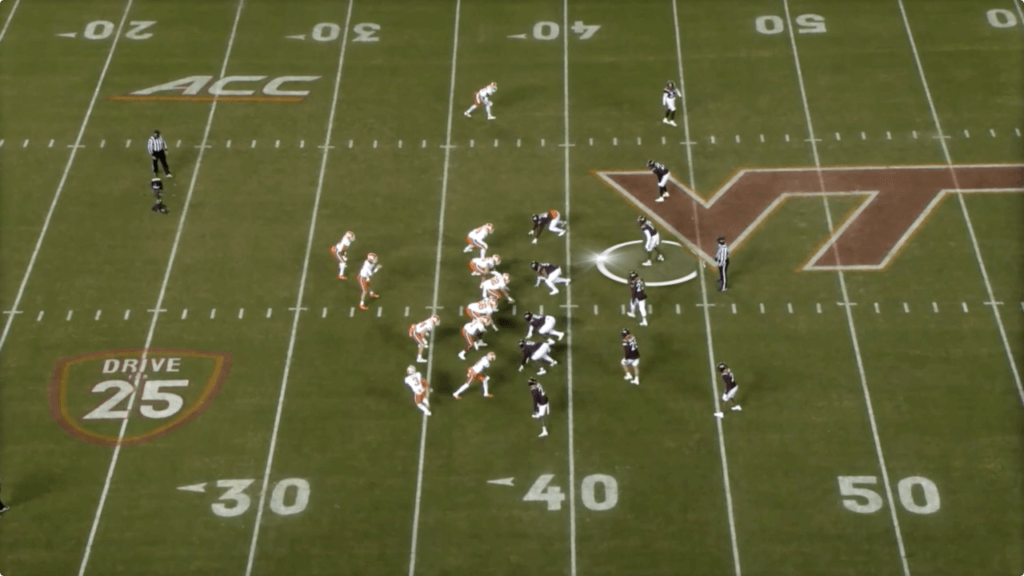
Here, Deablo started in a linebacker position, lining up over the B-gap.
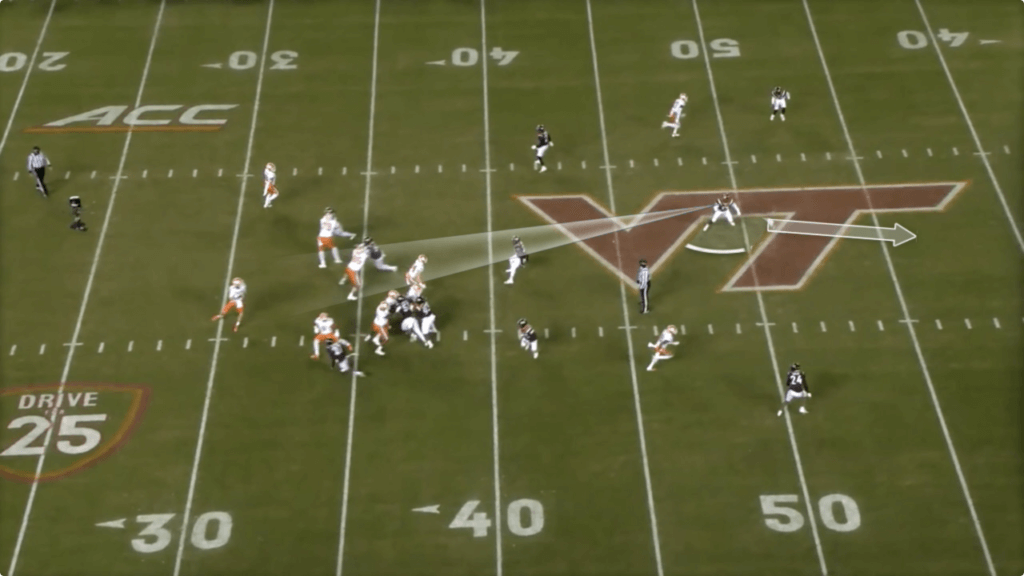
After the snap, he bailed to the middle hole in Virginia Tech’s two-deep defense. He was reading quarterback Trevor Lawrence’s eyes and opened up to the boundary receiver initially.

Lawrence looked back to the field receiver running a deep post and Deablo had to speed turn and get downfield in a hurry to help on the pass.

Deablo flashed his range and got downfield in time to make a play on the ball.
His versatility and athleticism would allow Bradley to disguise coverages and get creative, but first, he has to master the basics of playing linebacker. Though the hill seems like it’s steep, it’s easier in Bradley’s single-gap, fast-flowing system than it would be in a 3-4 for example.
Jets head coach Robert Saleh, who comes from the same Seattle coaching tree as Bradley, will attempt to transition 2020 draft picks Jamien Sherwood and Hamsah Nasirildeen, from safety to linebacker as well. He had a great answer about the process in his post-draft press conference.
Malcolm Koonce (6-2, 249 pounds)
“(Koonce’s) got a toolbox that you’d be surprised to see from a kid from Buffalo,” Mayock said after the draft. “I mean he’s got outside slip, he’s got a spin move. He’s got a fake spin move. I was teasing (Gruden) about it on the phone a couple weeks ago. Like, you don’t see many college guys with a fake spin move.”
Though Koonce is undersized and didn’t play much elite competition, he’s twitchy, bendy and coordinated. He displayed a wide array of moves that you don’t typically see from young pass rushers. One of my favorite traits watching him is how violent his hands are.
On this move, he quickly reacted to the blocker’s two-hand punch with a chop move, immediately dipped underneath him and ripped through. The dip is what Mayock might have been referring to when he said “outside slip”.
Here, he used a two-hand swipe to ward away the blocker’s punch and ripped underneath of him. Also, he displayed good balance by staying on his feet while getting pushed with his body at an angle as he tried to run the arc to the quarterback.
Like another pass rusher that the Raiders had success with drafting from Buffalo (cough… Khalil Mack), Koonce also likes to use the long arm move to power rush — I’m not comparing the two players. Using the long arm allows the rusher to use the full length of his body to separate from the blocker. In the clip, Koonce had perfect hand placement on his long arm. His hand was on the inside chest plate of the blocker. This allowed Koonce to knock the blocker’s inside foot or post foot off balance. Without the blocker’s weight on his post foot, Koonce was able to drive him back. The blocker was so off-balanced that Koonce made him drop to his knees after chopping down his hands.
When tackles overset, Koonce cuts in with inside counters. In the clip, the tackle tried to quickly close the space on Koonce with a jump set. Koonce seemed to read or anticipate the tackle’s position and faked outside before cutting inside of him with a rip. Initially, Koonce fell for the play action and took an angle to the running back but displayed impressive change-of-direction ability by adjusting his path and turning to the quarterback for the sack.
Here, the blocker took a vertical set but took a step too deep. Koonce detected the space and spun inside. He got to the quarterback but was unable to finish him for the sack.
Koonce has impressive athleticism and an uncommon number of moves. It is encouraging that in 2019 he had a good game against Penn State tackle Rasheed Walker, who is expected to be drafted by Day 2 next year. However, he just doesn’t have a lot of experience playing high-level competition. Whether or not he’ll be able to execute his full repertoire of moves against NFL linemen remains to be seen. If he’s effective in Year 1, he can be an effective third edge rusher behind Maxx Crosby and Ngakoue. His presence might even allow Bradley to use Crosby or Ngakoue as a spinner and move them around to create mismatches and confusion for opposing offensive lines.
Advertisement
Will all three players become contributors for the Raiders this season? Probably not. If Moehrig alone becomes a quality starter, that would be a huge boost for a Raiders defense in desperate need to stop big plays. If Koonce can produce as a situational rusher, he’d allow the Raiders to put together some interesting lineups on third down and add depth — his emergence would be a bonus. Deablo is more of a project and I don’t expect him to contribute much except for on special teams this season. All three players have strong upside.
(Top photo of Trevon Moehrig: Brian Bahr / Getty Images)
